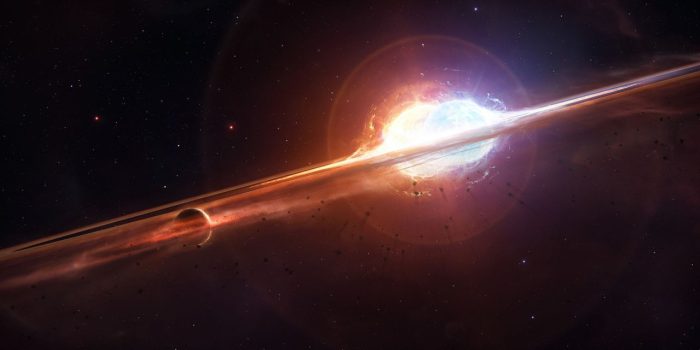Scientists have discovered a cosmic anomaly in the vastness of space that calls into question the fundamental assumptions underlying our knowledge of planetary formation. A recent study that was published in the journal Science discloses a puzzling discovery: a planet the size of Neptune called LHS 3154b orbits a tiny ultracool star that is only nine times as big as our Sun. This planet is surprisingly 13 times more massive than Earth. The drawback? The common belief is that a planet this size should be too enormous to be real.
Researchers from Pennsylvania State University made this awe-inspiring revelation, highlighting the exceptional nature of the mass ratio between LHS 3154b and its dwarf star. This ratio, a staggering 100 times greater than Earth’s relationship with the Sun, challenges established theories of planetary genesis. The prevailing wisdom posits that star formation necessitates vast clouds of celestial gas and dust, eventually giving rise to disks that coalesce into planets. However, the newly discovered planet-star pair defies expectations, as the accompanying dust disk appears insufficient to birth a planet of LHS 3154b’s magnitude.

Suvrath Mahadevan, a co-author of the study and professor of astronomy and astrophysics at Penn, remarked, “The planet-forming disk around the low-mass star LHS 3154 is not expected to have enough solid mass to make this planet. But it’s out there, so now we need to reexamine our understanding of how planets and stars form.”
The identification of LHS 3154b and its host star was made possible by the Habitable Zone Planet Finder (HPF), an astronomical spectrograph at the University of Texas’ McDonald Observatory. Operative since 2018, the HPF is designed to detect exoplanets orbiting ultracool stars, with a particular focus on those capable of hosting water and, potentially, life.

Megan Delamer, a graduate student in astronomy at Penn and co-author of the paper, expressed her excitement, stating, “An object like the one we discovered is likely extremely rare, so detecting it has been really exciting. Our current theories of planet formation have trouble accounting for what we’re seeing.”
In essence, the discovery of LHS 3154b poses a profound challenge to our existing comprehension of the universe, emphasizing the vast gaps in our knowledge. As Mahadevan aptly concludes, “This discovery really drives home the point of just how little we know about the universe. We wouldn’t expect a planet this heavy around such a low-mass star to exist.” As scientists grapple with the implications of this cosmic anomaly, the universe continues to unveil its secrets, beckoning us to explore further into the mysteries of the cosmos.


